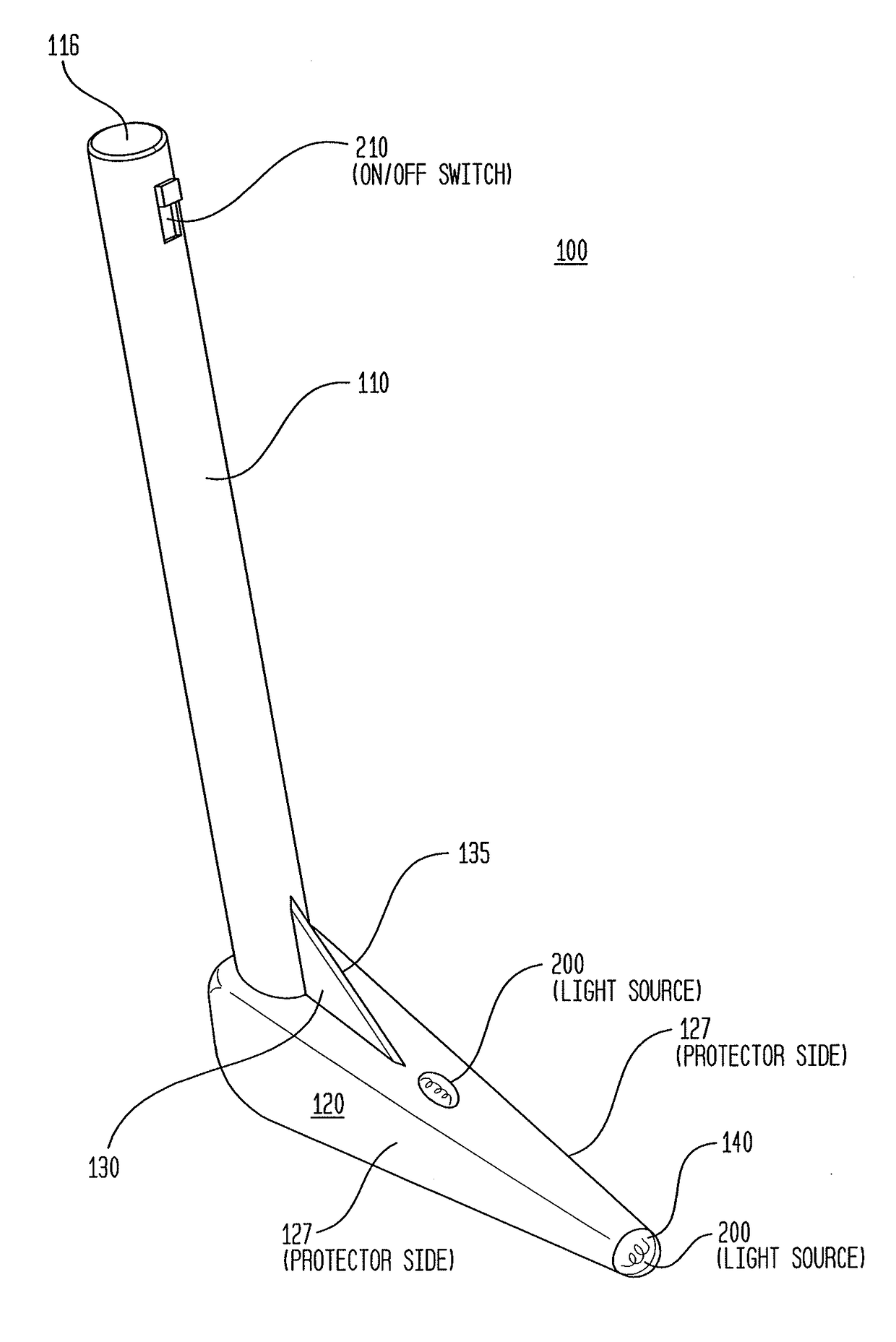Dural knife
a cutting device and cutting edge technology, applied in the field of cutting devices, can solve the problems of affecting the safety of patients, and damaging the underlying brain structure or blood vessels within the dura, so as to achieve the effect of safe raising the dura away
- Summary
- Abstract
- Description
- Claims
- Application Information
AI Technical Summary
Benefits of technology
Problems solved by technology
Method used
Image
Examples
Embodiment Construction
[0037]In the various views of the drawings, like reference characters designate like or similar parts.
[0038]FIGS. 2 and 3 shows an exemplary and non-limiting example of one embodiment of the dural knife 100 of the described invention. FIG. 1 illustrates a side view of the dural knife 100 comprising a handle 110, protector 120, and blade 130 assembled in one possible configuration.
[0039]According to some embodiments, the handle 110 is elongated and shaped to be gripped by a human hand and is connected on one end to protector 120. According to some embodiments, the handle 110 and the protector 120 are attached to one another at an approximately 120 degree angle. According to some embodiments, the handle 110 may be attached to the protector 120 at angles in the range of 20 degrees to 170 degrees, in the range of 40 degrees to 120 degrees, in the range of 60 degrees to 100 degrees, or at approximately 90 degrees. According to some embodiments, the handle has the approximate dimensions o...
PUM
 Login to View More
Login to View More Abstract
Description
Claims
Application Information
 Login to View More
Login to View More - R&D
- Intellectual Property
- Life Sciences
- Materials
- Tech Scout
- Unparalleled Data Quality
- Higher Quality Content
- 60% Fewer Hallucinations
Browse by: Latest US Patents, China's latest patents, Technical Efficacy Thesaurus, Application Domain, Technology Topic, Popular Technical Reports.
© 2025 PatSnap. All rights reserved.Legal|Privacy policy|Modern Slavery Act Transparency Statement|Sitemap|About US| Contact US: help@patsnap.com



